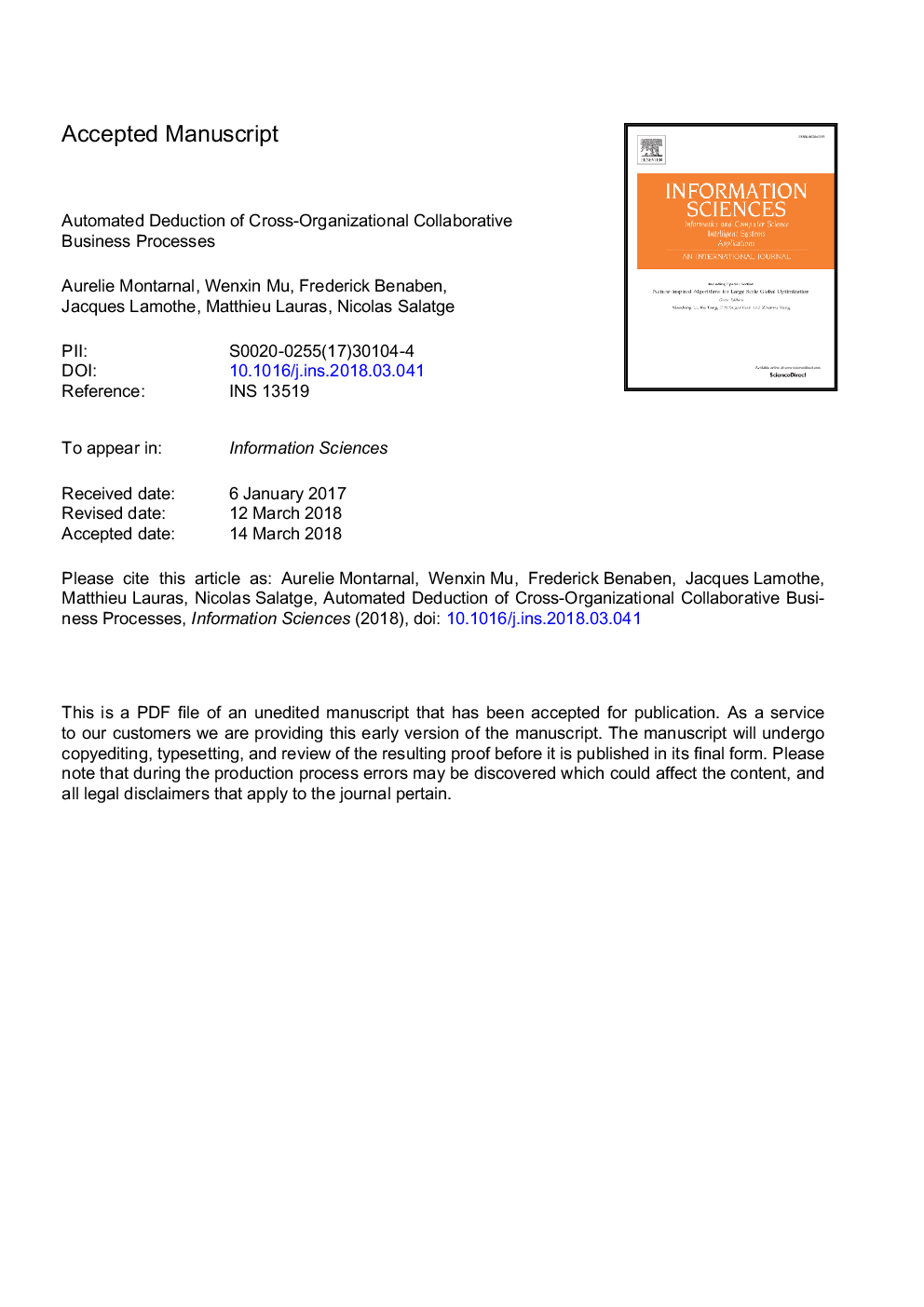ترجمه فارسی عنوان مقاله
محاسبه خودکار فرایندهای کسب و کار متقابل سازمانی
عنوان انگلیسی
Automated deduction of cross-organizational collaborative business processes
| کد مقاله | سال انتشار | تعداد صفحات مقاله انگلیسی |
|---|---|---|
| 82680 | 2018 | 35 صفحه PDF |
منبع

Publisher : Elsevier - Science Direct (الزویر - ساینس دایرکت)
Journal : Information Sciences, Volume 453, July 2018, Pages 30-49
ترجمه کلمات کلیدی
مدیریت فرایند کسب و کار، قابلیت همکاری، سیستم پشتیبانی تصمیم، معماری مدل رانده شده هستی شناسی، ترکیب خدمات کسب و کار،
کلمات کلیدی انگلیسی
Business process management; Interoperability; Decision support system; Model-driven architecture; Ontology; Business services composition;

